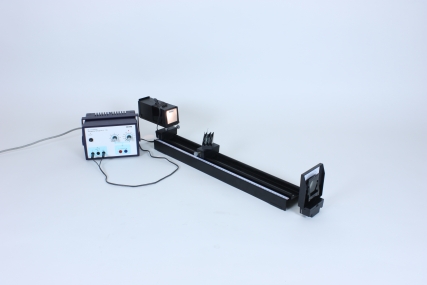Principle
If light is incident upon a glass surface, then a part of that light will be refracted and the other part reflected. At the same time, it is polarized in such a way that the vector of the electrical field strength of the polarized reflected Iight oscillates at right angles to the incident plane, and that of the refracted light oscillates parallel to the incident plane. Polarization of the refracted Iight will be the greater, the less the angle of incidence deviates from 56° and the more glass plates it passes through.
Benefits
- Multifunctional light box - All-in-one: Can be used for geometric optics on the table, colour mixing and on an optical bench
- Extension with others sets at anytime, no additional light sources needed, recognition value for students
Tasks
- Investigate whether light which has travelled through glass plates and thus undergone refraction, is polarized.
- Find out whether there is a correlation between polarization and a) the angle of incidence and b) the number of glass plates used.

